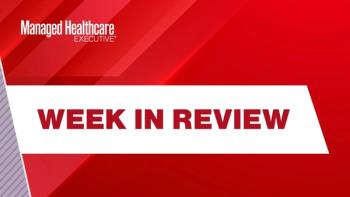
Colon cancer screening doubles with new EHR use
Centralized systems are likely to be the most efficient way to increase colorectal cancer screening, according to a trial published in the March 5 Annals of Internal Medicine.
Centralized systems are likely to be the most efficient way to increase colorectal cancer screening, according to a
Researchers used electronic health records (EHRs) to identify Group Health patients who weren’t screened regularly for cancer of the colon and rectum-and to encourage them to be screened. This centralized, automated approach doubled these patients’ rates of on-time screening-and saved health costs-over 2 years, according to the study.
“When these systems can be deployed they are less expensive than using primary-care resources,” study leader Beverly B. Green, MD, MPH, a family physician at Group Health and an affiliate investigator at Group Health Research Institute, told Formulary.
More than 1 in 20 Americans will develop colorectal cancer, which is second only to lung cancer in causing deaths from cancer. Screening for colorectal cancer is strongly recommended for everyone aged 50 to 75 years, but almost half of Americans do not get screened regularly-far below the screening rates for cervical and breast cancer.
The SOS (Systems of Support to Increase Colorectal Cancer Screening) trial identified 4,675 Group Health patients, aged 50 to 73, who weren’t up to date for colorectal cancer screening. Then they were randomly assigned to 1 of 4 stepped groups:
· The first group received “usual care,” which includes both patient and clinic reminders for those overdue.
· The second group received this plus “automated” care, which included a letter telling them they were due for colorectal cancer screening and a pamphlet about screening choices and the pros and cons of 3 screening options recommended by Group Health and the U.S. Preventive Services Task Force: fecal occult blood testing (FOBT) yearly; flexible sigmoidoscopy every 5 years (with 1 FOBT in between); or colonoscopy every decade. Those patients who didn’t call to schedule a colonoscopy or sigmoidoscopy received a FOBT kit in the mail with illustrated instructions and a postage-paid return envelope and a reminder letter 3 weeks later if the kit was not completed.
· The third group received usual care, automated interventions, and an additional step called “assisted” care if they still had not completed screening. Assisted care included a medical assistant calling patients to ask which screening option they preferred and provided simple assistance to get this done, such as sending a request for a colonoscopy to their physician, or reviewing the FOBT instructions.
· The fourth group received usual care, automated, the assisted intervention, and an additional step called “navigated” care if they were still overdue for screening or requested a colonoscopy or sigmoidoscopy during the automated or assisted steps. Navigated care included a nurse calling to advise patients and facilitate their screening, for those who wanted help in making their choice or wasn’t screened after the medical assistant’s call. Patients who chose colonoscopy or sigmoidoscopy were helped with making an appointment and preparing for the procedure and followed until the test was completed.
Each step of the SOS intervention raised the percentage of patients who were current for colorectal screening for both years: 26% for usual, 51% for automated, 57% for assisted, and 65% for navigated care.
The 2-year costs of the automated intervention plus the screening were actually $89 lower than if the patients had received only usual care. The reason: compared with patients who received usual care, more of those in the automated care group happened to choose FOBT instead of sigmoidoscopy or colonoscopy. And the kit costs much less than the procedures do.
Centralized EHR linked automated mailings and stepped support doubled screening and kept them current for both years of the study. “Extra support--medical assistant calls and nurse navigation--lead to stepped incremental increases compared to usual care and automated mailings alone. Automated mailings were less expensive than usual care,” Dr Green said.
“Electronic health record linked population registries and mail sorters lead to the largest increase, use of human resources lead to incremental increases at incrementally greater costs, but were still cost reasonable,” she said.
Newsletter
Get the latest industry news, event updates, and more from Managed healthcare Executive.

















































